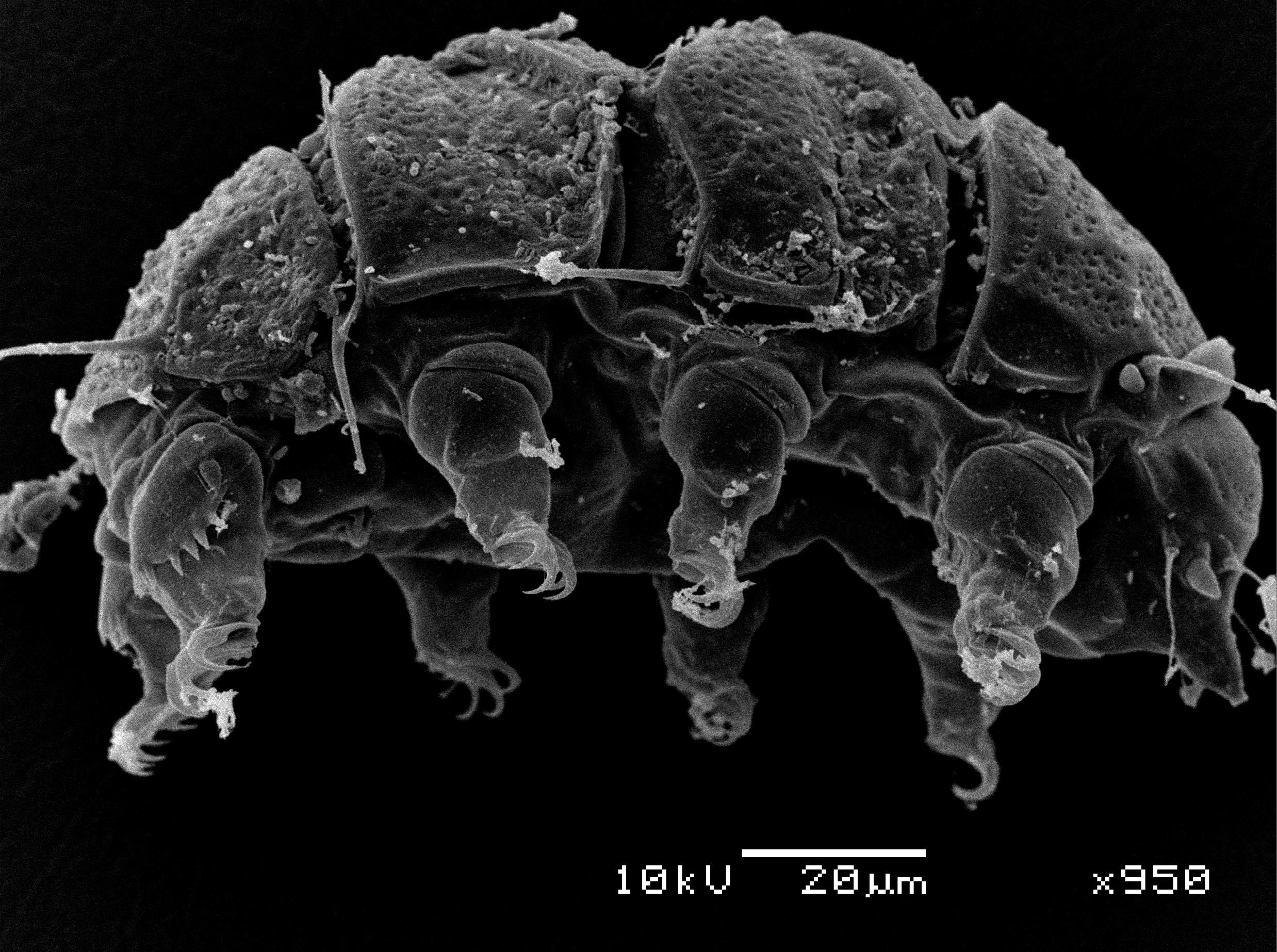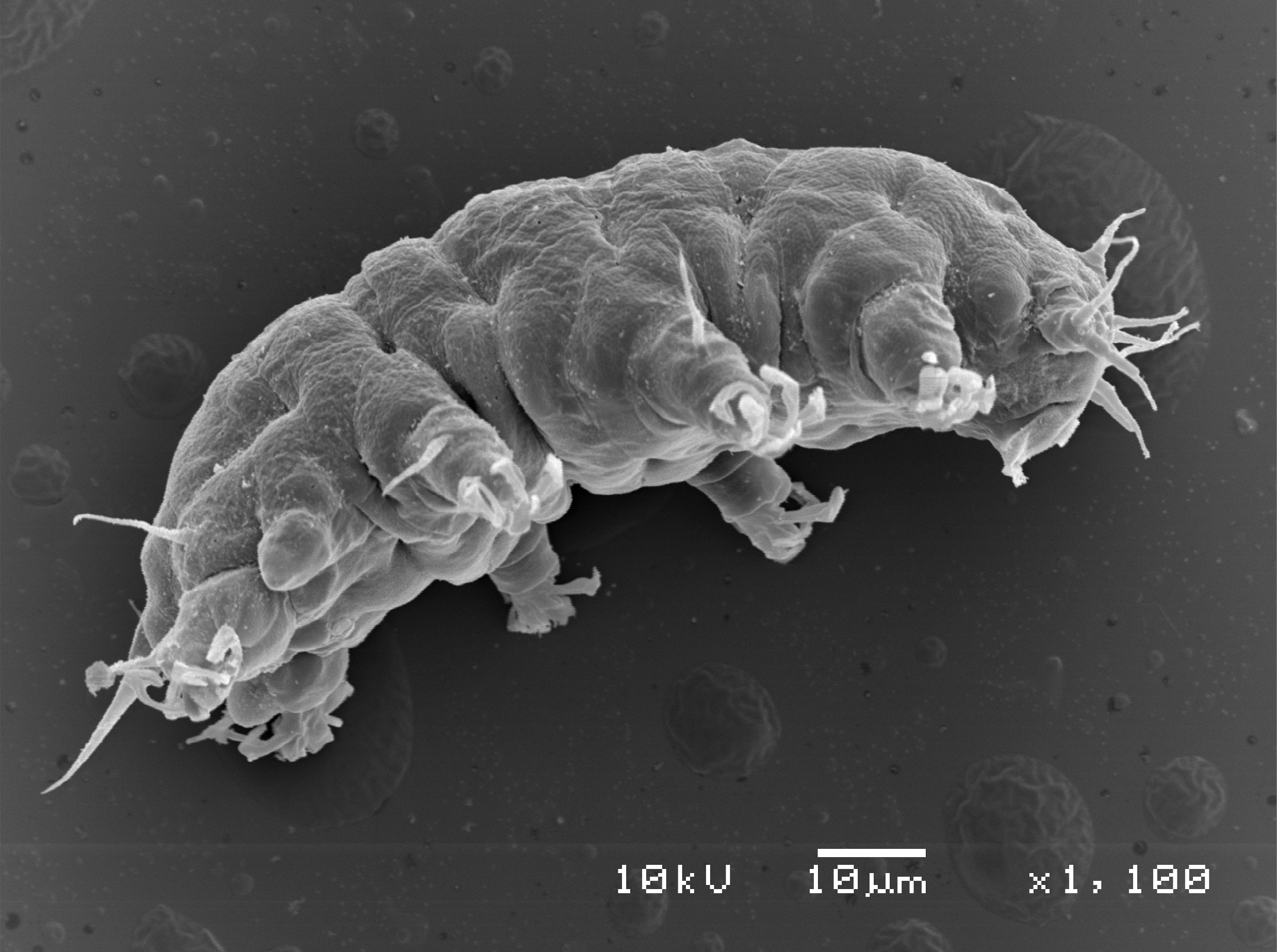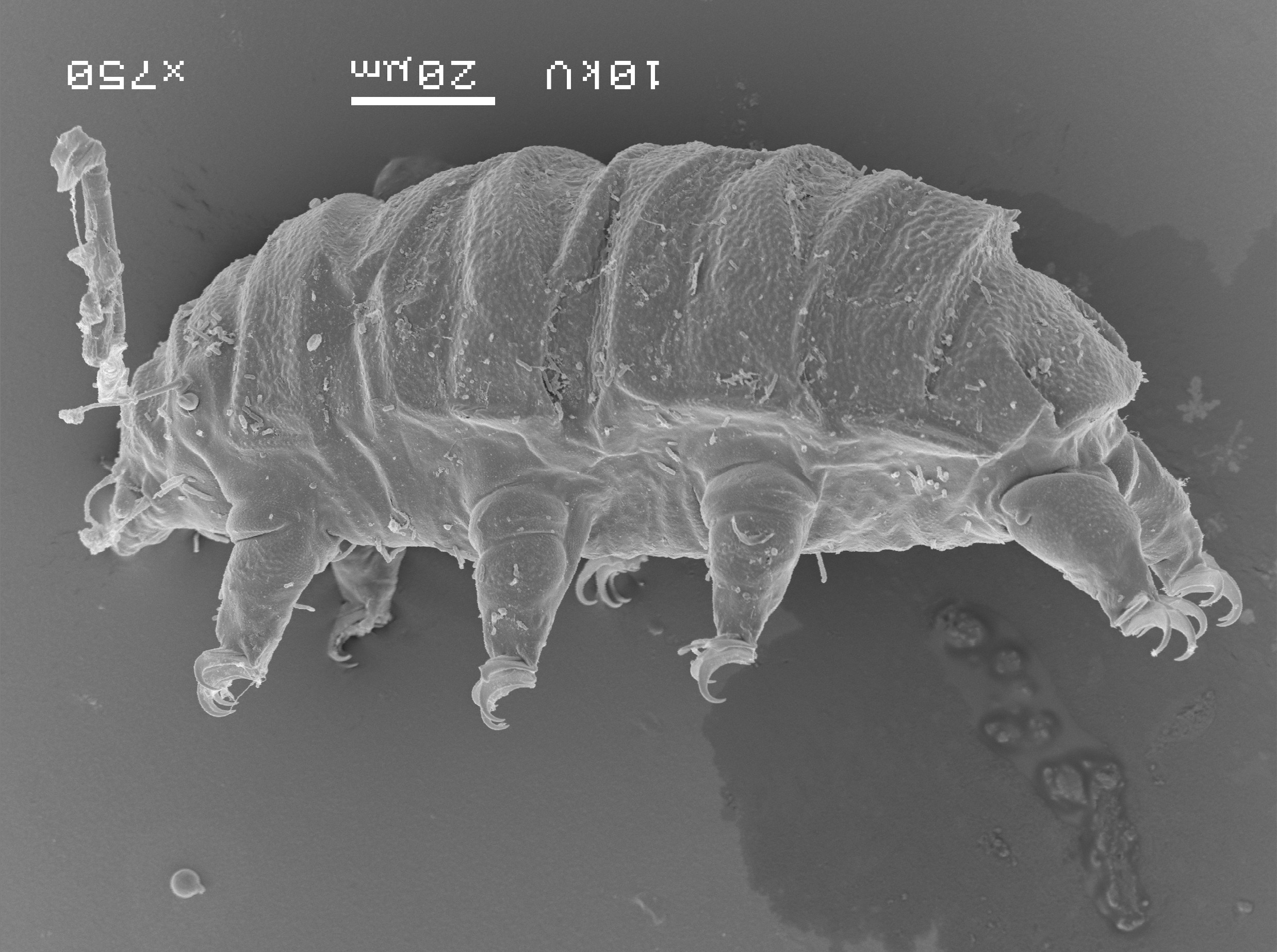

A tardigrade belonging to the genus Echiniscus, photographed by scanning electron microscope. Differences between one or two physiological traits were long thought sufficient to distinguish between species, giving rise to false cosmopolitan species, which have now been excluded from the list in the Neotropical and Andean regions (photo: André Garraffoni)
A study conducted by researchers at the State University of Campinas (UNICAMP) suggests that species thought to be distributed worldwide probably do not exist in Central and South America. At the same time, a wide array of environments and few specimens from the region point to the likelihood of vast species richness.
A study conducted by researchers at the State University of Campinas (UNICAMP) suggests that species thought to be distributed worldwide probably do not exist in Central and South America. At the same time, a wide array of environments and few specimens from the region point to the likelihood of vast species richness.

A tardigrade belonging to the genus Echiniscus, photographed by scanning electron microscope. Differences between one or two physiological traits were long thought sufficient to distinguish between species, giving rise to false cosmopolitan species, which have now been excluded from the list in the Neotropical and Andean regions (photo: André Garraffoni)
By André Julião | Agência FAPESP – Tardigrades are microscopic invertebrates measuring between 0.2 mm and 1.1 mm in length. They are close relatives of arthropods (spiders, insects, crustaceans), and can live in wide variety of environments. Yet little is known about them.
Many species were described in the twentieth century when few traits were thought necessary to differentiate species, and the molecular tools used today to compare one or more genes did not exist.
For this reason, in a study published in the Zoological Journal of the Linnean Society, researchers at the State University of Campinas (UNICAMP) in Brazil, with FAPESP’s support, stress the importance of ignoring historical records of tardigrades in the Neotropical region, as an analysis of tardigrade distribution patterns shows they were probably misidentified.
“Many species were first described in the northern hemisphere and were believed to be cosmopolitan, in the sense that they could live anywhere. As a result, whenever researchers found a similar species here, they concluded it was the same as a previously described species,” said Pedro Danel de Souza Ugarte, first author of the article, recipient of a scientific initiation scholarship from FAPESP, and a master’s candidate at the Institute of Biology (IB-UNICAMP).
In the article, the scientists propose to disregard a large number of records of known tardigrades in Central and South America, and to take into account only those described recently, since species are now distinguished on the basis of several traits, as well as molecular data. Tardigrade diversity in the region may be much greater than previously thought despite the large number of exclusions, they suggest.
“The diversity is probably enormous, but currently concentrated in a few countries due to the lack of specimens. Several twentieth-century studies were important but probably don’t represent the actual species richness,” said André Rinaldo Senna Garraffoni, last author of the article. He is a professor at IB-UNICAMP with a regular grant from FAPESP via its Research Program on Biodiversity Characterization, Conservation, Restoration and Sustainable Use (BIOTA).
FAPESP also supported the study via a Thematic Project under the aegis of BIOTA.
Tardigrade species can be very similar, Garraffoni added, and past distinctions were based only on a few morphological structures. Researchers now use molecular analysis and compare many physiological traits when describing new species.
Most tardigrades live in marine and freshwater environments, but many species are limnoterrestrial, with wet or seasonally flooded terrestrial habitats, such as ponds, lichen, moss, and water-storing plants.
Exclusion
271 limnoterrestrial species were recorded until 2023, from northern Mexico to southern Argentina. Since northern Mexico only partially falls within the biogeographic realms used by the researchers – Neotropical and Andean regions – four species were removed from the analyses, totaling 267 species.
The researchers classified as “false cosmopolitan” the tardigrade species first described in other regions and later reported in the Neotropical and Andean regions, and labeled “indigenous” those first described in the two latter regions. They analyzed the distribution of tardigrade species including and excluding all 130 “false cosmopolitan species” in order to find out how their inclusion affects broad distribution patterns in biogeographic realms and macroecological systems.

Batillipes pennaki, found in Brazil, is a marine species of tardigrade (photo: André Garraffoni)
“Tardigrades have relatively limited dispersal capacity, although it may vary between species. Some have dispersed over more than one continent, for example. However, most are believed to be restricted to only one region. Using records of species previously considered cosmopolitan but probably misidentified hinders our understanding of their distribution,” Garraffoni said.
Old records cannot be redescribed because the specimens have degraded or gone missing, or because the descriptions are too simple. Hence the researchers’ decision to disregard them. As a result, it is impossible to say whether almost 65% of known records (1,425 out of 2,157) belong to one, ten, 100 or more different species.
“There must be many more ‘indigenous’ species than are known today throughout the continent. The same may be true of the rest of the world. We expect many more species to be found in future, provided we collect many more specimens, especially in high-altitude environments, which are known to favor tardigrade diversity,” Ugarte said.
Indestructible
The internet abounds in photographs and drawings of tardigrades, as well as articles claiming that “water bears”, as they are also known, are indestructible and can survive drought, radiation, starvation, and even zero gravity – many tardigrades sent into space have returned alive.

Also known as “water bears”, tardigrades can live anywhere wet, from the sea, rivers and lakes to lichen, moss and other plants on land (photo: André Garraffoni)
Their capacity for cryptobiosis, or suspended animation, is a response to hostile environmental conditions. They curl up into a ball, reduce their metabolism to a minimum, and can remain dormant for years without food or water, reanimating when conditions return to normal.
Cryptobiotic (or dormant) tardigrades are extremely hard to detect. Samples of material in which they may be present have to be placed in water so that they become visible.
Many possible ecological functions of tardigrades are unknown, the researchers noted. They feed on decomposing organic matter and other microorganisms, so they may control the populations of other beings that could be pathological to humans or crops, for example.
Furthermore, when scientists in other countries studied the proteins involved in cryptobiosis, they identified potential applications ranging from vaccine conservation to protection against solar radiation.
“There’s an avenue of research possibilities, but first we need to find out everything we can about this biodiversity, which is ubiquitous,” Garraffoni said.
Many answers can be discovered near at hand. In March, the group described a novel species found a few meters from the laboratory where they work on the campus of the State University of Campinas.
The article “Removal of historical taxonomic bias and its impact on biogeographic analyses: a case study of Neotropical tardigrade fauna” is at: academic.oup.com/zoolinnean/article-abstract/201/3/zlae091/7724047.
Republish
The Agency FAPESP licenses news via Creative Commons (CC-BY-NC-ND) so that they can be republished free of charge and in a simple way by other digital or printed vehicles. Agência FAPESP must be credited as the source of the content being republished and the name of the reporter (if any) must be attributed. Using the HMTL button below allows compliance with these rules, detailed in Digital Republishing Policy FAPESP.





